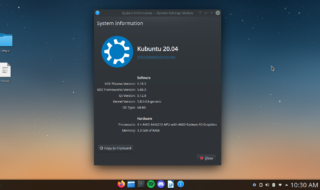Microsoft latest release is Windows 10, which is currently the best operating system any users can have on the PC. It runs fluid on 3rd generation processors, DDR3 4GB RAM, and 512MB graphics.
One of the major reasons why many people are switching to the Windows 10 because of the number of features the operating system has it. There is no doubt that the latest release is the next step to the futuristic approach.
We have already explained why Windows 10 considered as the best OS to this date because of the features, but the number of additional features is significantly higher.
Contents
Does Disabling Features Effects Performance?
There are too many features that none of us needs it, but Microsoft couldn’t add Enable and Disable options for every single feature. However, they let the developers do the job as well.
There is no doubt that disabling features will affect some applications and today we are going to show how you can disable Location Services.
We would like to let you know that disabling it will not have much of an impact, but if there’s an application that requires locations, then it won’t function properly.
So, make sure to save the URL because you can enable it anytime you want by following our steps backwards.
How to Disable lFSVC?
We will show you how you can disable location or geolocation.
#1 – Method for stopping lFSVC
Let us show you how easily you can disable location in Windows 10 (Any version.)
One: First, you have to open settings, so click on the “Start” button and click on the SETTINGS gear icon.

Two: Once the settings tab is opened, you have to select “PRIVACY” and open it.

Three: When the privacy tab is opened, you can see that there is an option called “location” you have to click on it.

Four: Now, you have to disable the location service by clicking on the icon. We have shared the screenshot.

Five: The location is disabled; you won’t be able to use it until you enable it manually. Scroll down and click on CLEAR LOCATION HISTORY because programs can have access to your old location.

You don’t have to worry about Windows auto-enable and no apps can auto-enable it unless you permit the third-party application to use it without your permission. Make sure to read the permission grant of every program before you install on your Windows PC.
If you scroll a little more, then you will able to see, which program have access to precise location and you can even turn those off to keep them away.
#2 – Method for disabling lFSVC
You can use this simple shortcut the Windows has given you to enable and disable location service.
One: Click Win+A, and it will open Action Center immediately.

Two: Now, you can see that there isn’t many options present there, so you have to click on “Expand.”
Three: Many options will show up in the action center, and one of them is location services. Click on it to turn on and off. You can use this shortcut anytime to quickly turn on and off the service.
One of the reason why we have not recommend it to you because this options may not completely turn off the service. Windows don’t assure you that it completely disable the option, but that is not the case in the settings option.
In settings option, you can turn off the location service completely by clearing the previously saved information, disabling access to the current program which needs access to it, and you get full control over there.
#3 – Method for ceasing SVC service
We know that some of you are developers and have knowledge in this area, so we are going to get a little technical side. We are going to show you, how you can control manually.
One: Type regedit in the search bar and run as administrator.
Two: Reach the highlighted folder destination “HKEY_CURRENT_USER\SOFTWARE\Microsoft\Windows NT\CurrentVersion\Sensor\Permissions\{BFA794E4-F964-4FDB-90F6-51056BFE4B44}”
Three: The file name “SensorPermissionState DWORD” and you have to open the string.
Four: The value you have to add is 0 for off and 1 for on.
Manually, you can get rid of the location service.
Conclusion
Let us know which one has worked for you and also tell us how well did method three worked for you in the comment section below.



